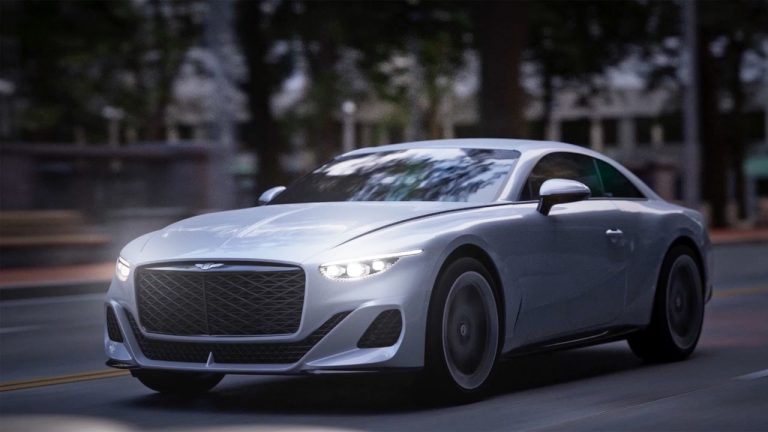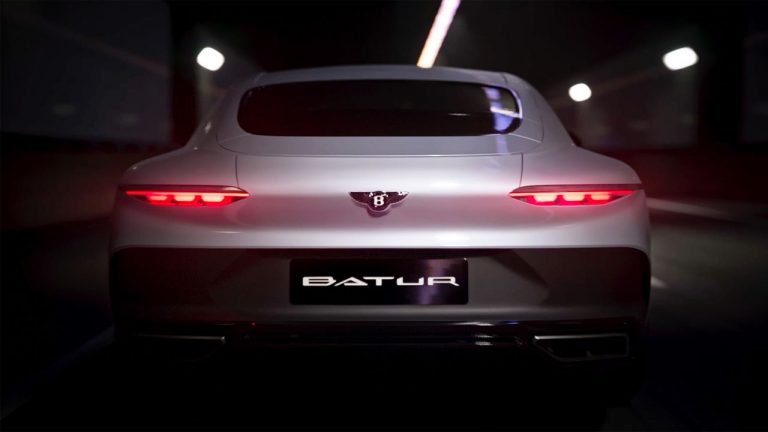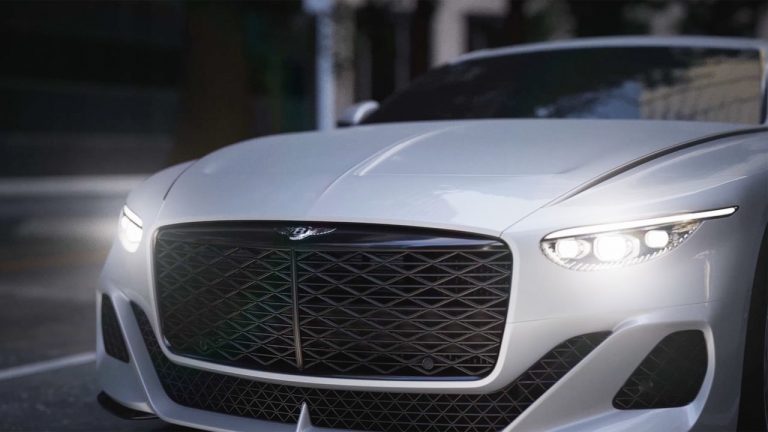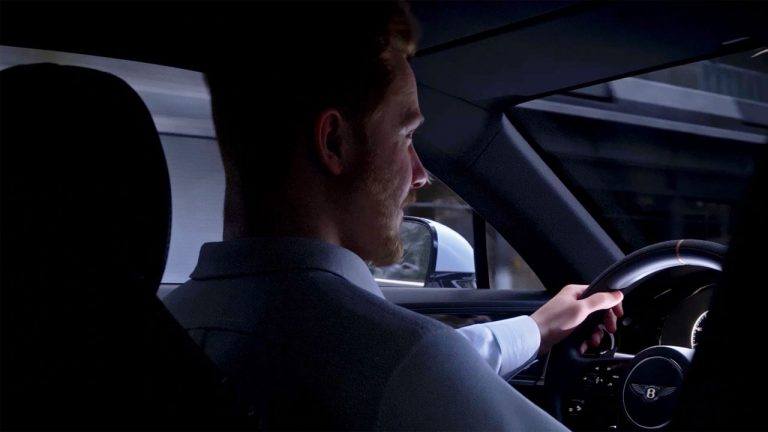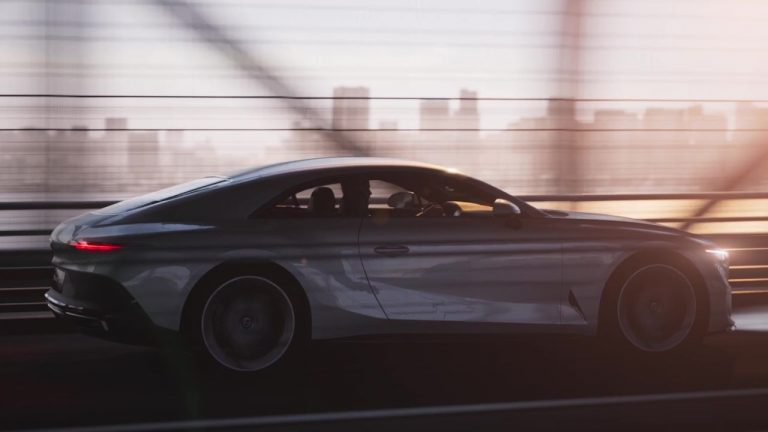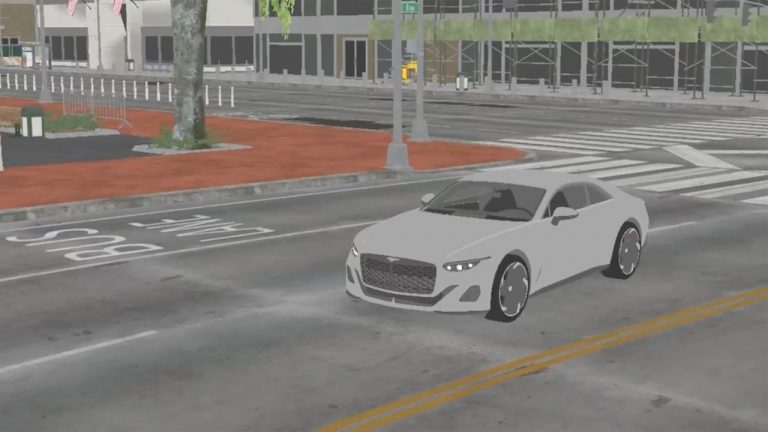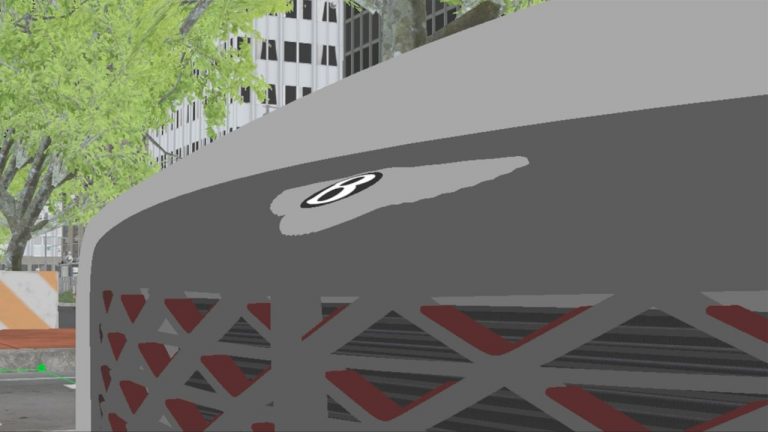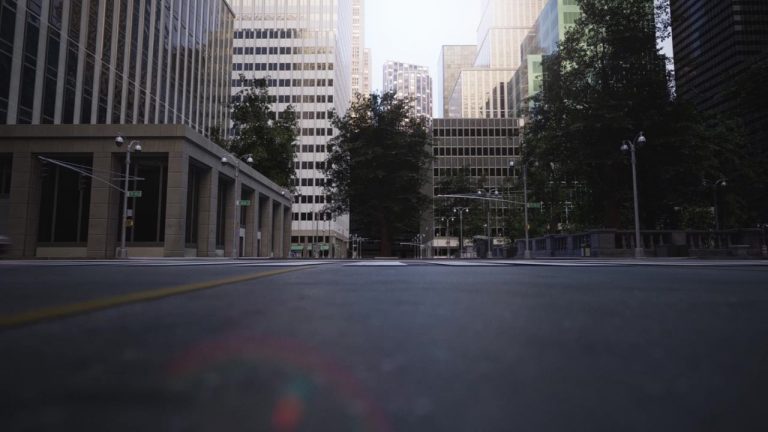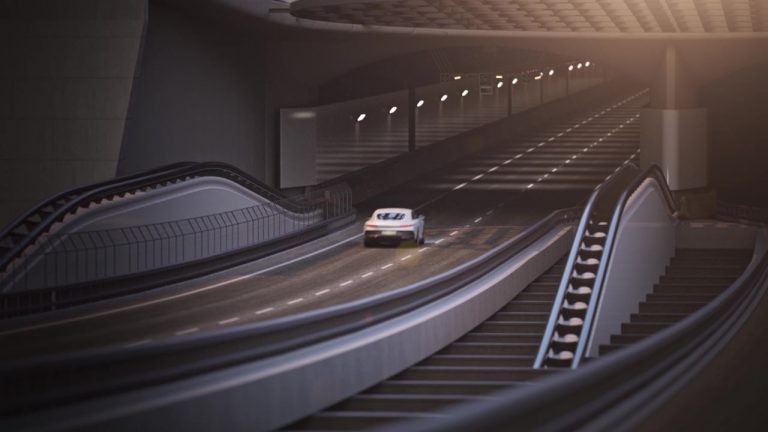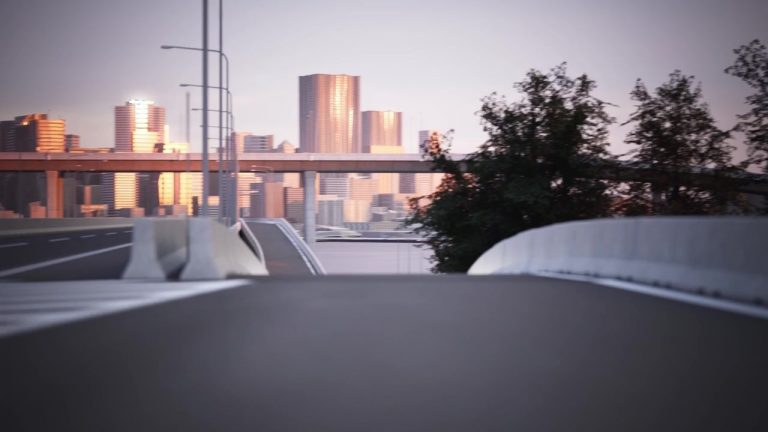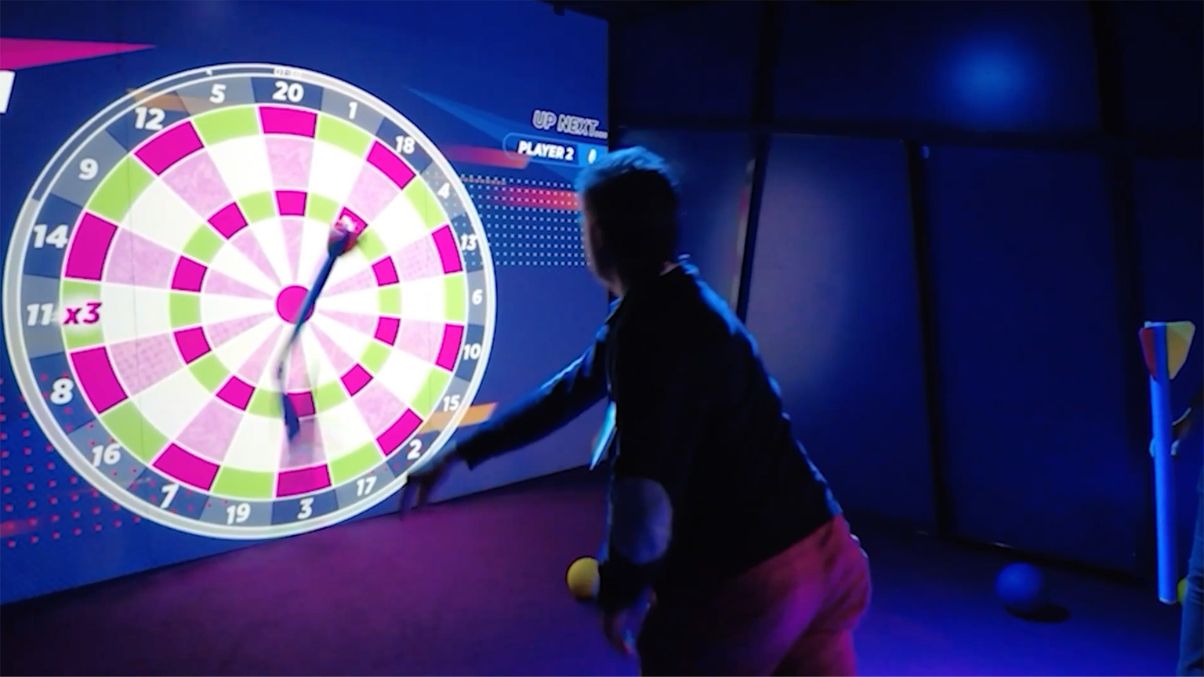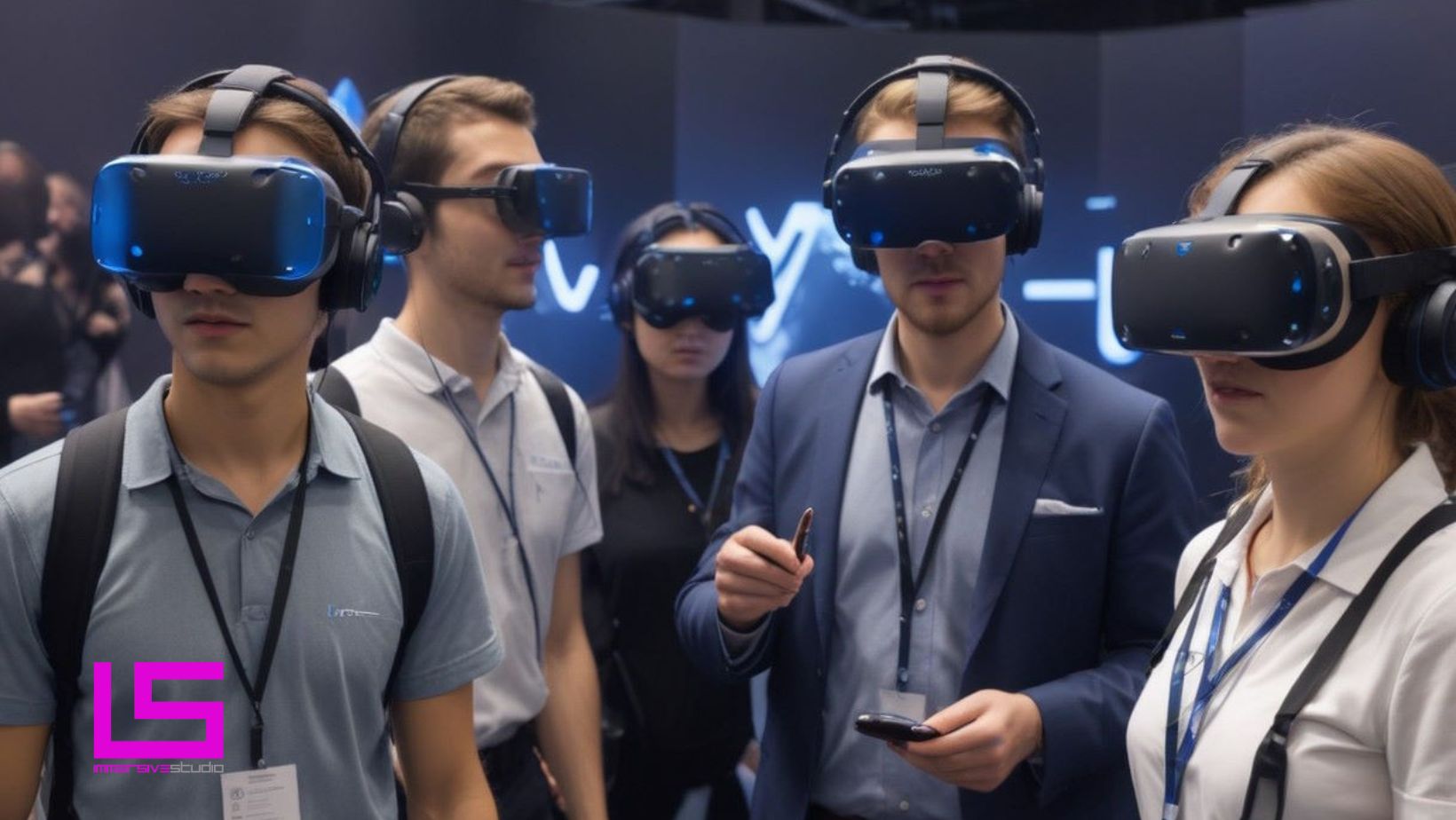Introduction
In the rapidly evolving digital landscape, car cinematics have transcended beyond mere visual attractions to become storytelling powerhouses that captivate audiences through mesmerizing realism and dynamic motion. This guide includes a demo project that sets you on a thrilling journey into the heart of creating breath-taking car sequences using two game-changing platforms: Unreal Engine and 3ds Max. Mastering hyper-realistic car cinematics isn’t just about understanding software tools; it’s an art form that combines precision engineering with cinematic creativity. Embark on this adventure to unlock new dimensions in the realm of visual effects, where every detail from the reflective gleam on a car’s surface to its shadowy dance along city streets contributes to crafting immersive experiences.
The Project
As huge Bentley’s fans we wanted to explore the ultimate grand tourer, the Batur a coachbuilt vehicle to be created by Mulliner. The Batur is the most powerful Bentley to date with its W12 engine that can trace its origins back to the Continental GT of 2003. This exclusive batch of 18 cars each of which will feature an exceptional level of bespoke craftsmanship and take around four months to handcraft will be completed by the end of 2024.
So, we thought why not bring this stunning car to life in a Hyper-Realistic Car Cinematics through the power of Unreal Engine and CGI, in a stunning 3D virtual city environment to demonstrate how this software can be used to its full potential.
Traditionally perceived as distinct entities—Unreal Engine is known for its real-time rendering capabilities in games and interactive experiences, and 3ds Max celebrated for its detailed modelling abilities—the fusion of these powerful tools opens up unprecedented possibilities. Together, they create a synergy that empowers creators to bring unparalleled levels of realism into their digital scenes. Unreal Engine’s real-time global illumination paired with 3D models intricately designed in 3ds Max.
By creating this demo in Unreal Engine and 3dS max we were able to use advanced rendering techniques, that resulted in in a hyper-realistic simulation that dazzles the senses. Driving this digital masterpiece through our intricately designed cityscape, not only showcased the beauty of the vehicle, but also demonstrated the endless possibilities of utilising Unreal Engine and 3ds Max for creating Hyper-realistic car cinematics and immersive automotive experiences.
Pipeline For Creating Hyper-Realistic Car Cinematics
For those of you who are familiar with our work will know that we are obsessed with the details and are expert in high quality CGI production work which we used to reproduce this project. The scenes were initially setup in 3ds Max where we were able to use a mixed modelling approach where we combined hand-built assets with high quality pre build 3d stock models which were manually enhanced to enable us to create to extensive city environment to travel the Bentley around.
To make such an expansive environment was a challenge especially at the level of detail we wanted to capture in the scene and this is why we decided to the put our assets into the Unreal Engine pipeline rather than a standard CGI pipeline. This enabled us to continue to work quickly, achieve the hyper-realistic look we were after, whilst evolving our experience creating cinematic city environments to move around via animation using the game engine. After delivering numerous projects with expansive digital environments, we have built out our unique pipeline and asset and texture library within URE.
Incorporating A Meta Human Into Hyper-Realistic Car Cinematics
One issue we always have when we see a CG animated car cinematic is that they often miss the ability to include a real human driver which often results in quite stale looking moving cars. We decided to solve this by creating our own bespoke Meta human whose design was based on one of our animation team. We applied custom captured motion capture of our animator driving a car which we applied onto the custom meta human and seated inside the Batur, which we felt really helped to lift the animation quality.
Project Takeaways
-The final rendered scenes we created required very little post production which previously was an issue in earlier UNREAL projects we had rendered out from, however we did have issues with the latest version of URE throwing up weird artefacts on the materials and not recognising and mapping certain parts of the geometry straight away ( we did need to do a bit of R&D and re work a bunch of the shaders to resolve the issues)
-We were able to quickly make up animatics to establish a rough story without embarking on a lengthy preproduction exercise, we were able to jump right in and create exactly what we needed in a very efficient way due to the way we had set up the city in a modular way.
-As part of the project we have ended up creating our own bespoke automotive shader library which pushed past what was currently being done with URE and helped to improve the quality finished of the models we were animating, which can now be used across all our Hyper Realistic car cinematics and other automotive projects we create.
Continue Reading to find out more about the power of Unreal Engine and 3ds Max.
Harnessing the Power of Unreal Engine and 3ds Max for Photorealism
Unveiling the advanced capabilities of both Unreal Engine and 3ds Max in realistic rendering opens up a multitude of creative avenues for visual artists. Unreal Engine, renowned for its real-time rendering prowess, offers seamless integration with 3ds Max, thereby creating a powerhouse combo that can bring any automotive visualization to life with stunning details. This fusion not only elevates the quality of car cinematics but also significantly reduces production times, allowing artists to iterate designs rapidly without compromising on visual fidelity.
Leveraging Unreal Engine’s cutting-edge ray tracing technology alongside 3ds Max’s robust modelling tools unfolds an unrivalled pathway to hyper-realism. The synergy between these platforms enables creators to meticulously sculpt every curve and feature of their vehicles while bathing them in dynamic lighting scenarios that mirror the complexity of natural light interactions. By mastering control over materials, reflections, and texture resolutions within this integrated workflow, designers are not just replicating reality – they are reimagining it. This capability empowers users to achieve breath-taking visuals and Hyper-Realistic Car Cinematics where chrome glints under synthetic suns as convincingly as it would on a bright day at any auto show globally.
Furthermore, exploring advanced features such as dynamic weather systems in Unreal Engine coupled with high-fidelity animations from 3ds Max transforms static showcases into immersive experiences that captivate audiences. The intricacies involved in simulating accurate environmental interaction – like raindrops cascading off a polished hood or dust swirling behind speeding tires – add layers of depth that transcend traditional cinematic boundaries. Ambient occlusion techniques bridge gaps between CGI and realism further by ensuring shadows behave authentically around every contour making each frame not just seen but felt deeply by viewers.
Crafting Realism: Advanced Texturing Techniques for Lifelike Surfaces
Delving into the realm of hyper-realistic car cinematics demands a mastery over the art and science of texturing. The sheer complexity of surfaces on cars – from the metallic sheen of the body, reflective glass panels, to the intricate tread patterns on tires – requires a nuanced approach to texture mapping and material creation. Utilizing Unreal Engine alongside 3ds Max opens up a vast toolkit for achieving such detail, where each software plays its pivotal role in transforming bland meshes into visually captivating models.
In Unreal Engine, physically based rendering (PBR) materials elevate the realism of car surfaces by simulating how light interacts with them. The key lies in meticulously crafting Material Instances derived from base textures — albedo, specular, normal map, and roughness — ensuring that every nuance, be it a slight irregularity in paint work or subtle reflections on chrome finishes, is captured. Layering these textures within 3ds Max allows artists to precisely control aspects like displacement for bumpy tire rubber or anisotropic highlights mimicking brushed metal effects. It’s this depth of layering combined with fine-tuning parameters like tile size and relief depth that breathes life into digital models.
Pushing boundaries further involves tapping into 3ds Max’s powerful UVW Mapping tools to ensure textures conform flawlessly to complex car geometries without seams or distortions. Herein lies an often-overlooked aspect; procedural texturing techniques can dynamically alter surface details based upon environmental factors or user input within Unreal Engine scenarios – think mud splatters appearing on side doors during rain scenes or dust accumulation after desert racing sequences. Such dynamic interactivity not only enriches visual fidelity but also immerses viewers deeper into the Hyper-Realistic cinematics experience by making every frame feel palpably real and reactive.
Embarking on this journey towards creating hyper-realistic car cinematics underscores a commitment not just to technical proficiency but also creative vision – translating routine texturing workflows into extraordinary storytelling vehicles that captivate audiences at first glance.
Crafting the Illusion of Reality: Mastering Lighting Effects
Lighting is not just a component; it’s the soul that breathes life into car cinematics, transforming ordinary scenes into immersive experiences. The careful manipulation of lighting in Unreal Engine, when combined with 3ds Max’s powerful rendering capabilities, enables creators to simulate a breathtaking range of real-world lighting conditions. Whether it’s the golden hue of a sunset reflecting off the sleek curves of a sports car or the harsh shadows cast by streetlamps in an urban chase scene, mastering lighting effects can dramatically elevate the realism and emotional impact of your visuals resulting ins stunning Hyper-Realistic Car Cinematics.
Delving deeper, dynamic lighting techniques such as ray tracing come into play, enabling not only realistic reflections and shadows but also complex interactions between light and materials. Imagine capturing the nuanced way light dances across different surfaces – from the matte finish on vintage cars to glossy modern paint jobs and even transparent elements like windows. By harnessing these tools within Unreal Engine, you embark on crafting scenes that go beyond mere visual mimicry; they evoke feelings, create atmosphere, and tell stories without words. However, achieving this high degree of realism requires more than technical know-how; it demands creativity and an intuitive understanding of how light operates both in reality and within our digital realms.
Harnessing the Power of Motion: Masterful Vehicle Animation Techniques
Creating a life-like sense of motion in vehicle animations requires a blend of technical prowess and creative insight. The Unreal Engine, coupled with 3ds Max, offers an unparalleled platform for animators to bring vehicular dynamics to hyper-realistic levels. Key to mastering this is understanding how vehicles interact within various environments – whether racing down rain-soaked streets, negotiating tight urban turns, or soaring through rugged landscapes. Utilizing Unreal Engine’s advanced physics simulation combined with precise rigging techniques in 3ds Max can bridge the gap between static models and dynamic automotive art.
To elevate your vehicle animations from mere movement to storytelling elements to Hyper-Realistic Car Cinematics, start by focusing on weight distribution and inertia. A common pitfall often overlooked is not accounting for how mass affects momentum and stability during manoeuvres such as acceleration, braking, or cornering; each action should reflect real-world physics to captivate your audience genuinely. For example, when a car accelerates rapidly from a stand still in Unreal Engine, incorporating the subtle rear-end dip due to weight transfer adds an authentic character missing from generic animations. Similarly, using 3ds Max’s animation layers allows you dynamically animate suspension adjustments that react realistically under different conditions—a technique that breathes life into your scenes by portraying cars responding believably according to their design and the forces enacted upon them.
Elevating Car Cinematics with Compelling Special Effects
Special effects serve as the pulse of hyper-realistic car cinematics, transforming routine scenes into memorable moments that captivate and enthral audiences. The integration of advanced special effects in Unreal Engine, when combined with 3ds Max’s precision modelling, enables creators to infuse their cinematic sequences with a remarkable degree of realism and drama. From the subtle dust kicked up by tire treads to intense weather dynamics shadowing a high-speed chase scene, every effect meticulously contributes to an atmosphere teeming with palpable tension and excitement.
Developers have at their disposal an array of tools within these platforms to simulate compelling environmental interactions—be it raindrops streaking across windshields or the intricate light play reflecting off sleek automotive surfaces during a sunset drive. Leveraging Unreal Engine’s powerful particle system alongside 3ds Max’s robust animation capabilities allows for seamless creation of dynamic effects such as smoke trailing from screeching tires or sparks flying during dramatic collisions. By not just focusing on aesthetics but also incorporating physics-based simulations, creators can produce sequences that are visually splendid yet grounded in convincing physicality.
What sets apart truly engaging Hyper-realistic car cinematics is not just the spectacle of visual effects but how they are woven into the narrative context effectively. Strategic use of slow-motion captures at critical junctures amplifies impact moments; while realistic damage modelling accentuates vehicular wear-tear or aftermaths post-collision — each element enriches storytelling without uttering a single word. Thus, through thoughtful integration where technical prowess meets artistic vision, developers craft immersive worlds that resonate deeply with viewers, elevating digital experiences beyond simple entertainment into artful expressions bound by no limits but imagination itself.
Conclusion
In conclusion, the integration of Unreal Engine and 3DS Max has revolutionized the creation of hyper-realistic car cinematics, offering an unprecedented level of detail and realism that was once thought to be unachievable. This combination not only enhances the visual aesthetics but also significantly reduces production time and costs, making it an invaluable asset for filmmakers and game developers alike. The future of automotive visualization lies in harnessing these powerful tools to create immersive experiences that captivate audiences like never before. As technology continues to evolve, so too will the possibilities for creating even more lifelike and engaging content. For those looking to push the boundaries of digital artistry and storytelling, now is the time to explore the synergies between Unreal Engine and 3DS Max – your next project could redefine what’s possible in car cinematics.
If you would like to find out more about this Hyper-Realistic Car Cinematics project or you have a similar project that you would like to explore with us then please feel free to complete the contact form below so we can discuss your idea in more detail.
